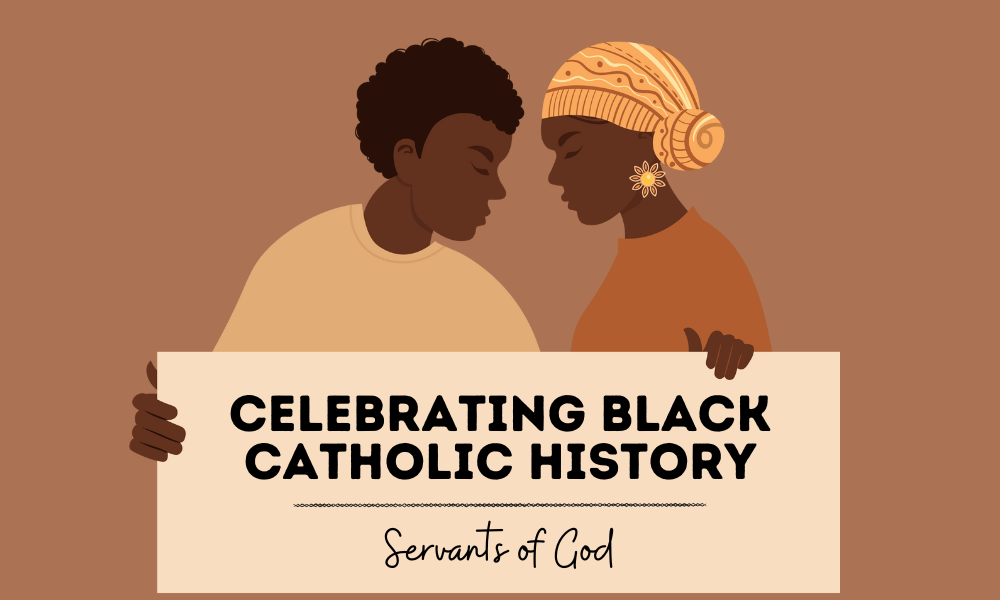
Black Catholics on the Road to Canonization: The Servants of God
There are a total of six Black Catholics on the canonization journey to join other Black and African saints and martyrs in the communion of saints. All of these men and women of God have stories of faith that serve as inspiration for us to fervently pursue the Lord, no matter our station in life.
There are a total of six Black Catholics on the canonization journey to join other Black and African saints and martyrs in the communion of saints. All of these men and women of God have stories of faith that serve as inspiration for us to fervently pursue the Lord, no matter our station in life.
There are four stages to becoming a saint:
- Servant of God: A cause is presented to the Congregation for the Causes of Saints and is accepted.
- Venerable: Once the cause is approved, the Congregation for the Causes of Saints declares the person lived Christian virtues heroically.
- Blessed: The Congregation recognizes that the person is in heaven and requires that a miracle has taken place through the intercession of that person. The person is beatified at this stage.
- Saint: After beatification, another miracle due to the person’s intercession is needed. Once proven, the Pope will declare the person a saint at a Canonization Ceremony.
These three Black Catholics are in the first stage on the journey to becoming a saint.
Thea Bowman (1937-90)
Raised in Mississippi, this “old folks child” was curious and learned survival skills and coping mechanisms from her elders to navigate through the turbulent times of the civil rights movement. As Thea grew, so did her faith as she recognized God’s love and providence for the poor and oppressed. She converted to Catholicism as a child and, inspired by the faith’s dedication to serving the poor, eventually dedicated her life to serving others by becoming a Fransiscan Sister of Perpetual Adoration at the age of 15. Sister Thea’s life was dedicated to education, having earned a doctorate and becoming a professor of English and linguistics, and using cultural awareness of Black culture and spirituality to evangelize and share the Gospel with others. Sister Thea enlightened bishops and urged them to continue evangelizing the Black community, promoting inclusivity and full participation of the community in the Church in leadership and schools. Despite poor health toward the end of her life, Sister Thea remained undeterred from sharing her faith and love of Jesus Christ with others until her death.
Julia Greeley (1833-48–1918)
Julia was freed from slavery in 1863, but not before a slavemaster’s whip caught her right eye and destroyed it. She earned a living serving families and used the majority of her earnings to help poor families in need, often doing her charitable work in the middle of the night to avoid embarrassing the people she helped. Julia became Catholic in 1880 and was an enthusiastic devotee of the Sacred Heart of Jesus, handing out literature to Catholics and non-Catholics to spread devotion to the Sacred Heart and the Eucharist. She also became a member of the Secular Fransiscan Order in 1901 and remained active until her death in 1918. Julia was admired by all who knew her for her devotion to the poor and her faith.
Mother Mary Lange (1794-1882)
Born Elizabeth Lange in Santiago de Cuba, she grew up in the French-speaking area of the city before fleeing the Haitian Revolution and arriving in Baltimore, Maryland. When she saw the lack of educational opportunities for Black children, she opened her home and used her own money to provide education to those children, which was an incredible feat for a Black immigrant in a slave state before the Emancipation Proclamation. When Reverend James Hector Joubert challenged Elizabeth to open an official school for girls of color in 1928, Elizabeth confessed her desire to fully commit herself to God and wondered if a new religious order should be started for this effort. With the support of Father Joubert and the archbishop, Elizabeth and three other Black women made their profession of poverty, chastity, and obedience to the archbishop and formed the first congregation of Black women on July 2, 1829. From that day forward, Elizabeth was known as Sister Mary, founder and first superior of the Oblate Sisters of Providence. After Father Joubert’s death, Sister Mary experienced the turbulence of racial injustice and poverty that plagued the Black community, in addition to dwindling numbers of pupils and coworkers. Despite these challenges, Mother Mary kept her faith and gave her all to Christ until the day she died.
Candace Bryant-Lester is the assistant editor at FAITH Catholic.



